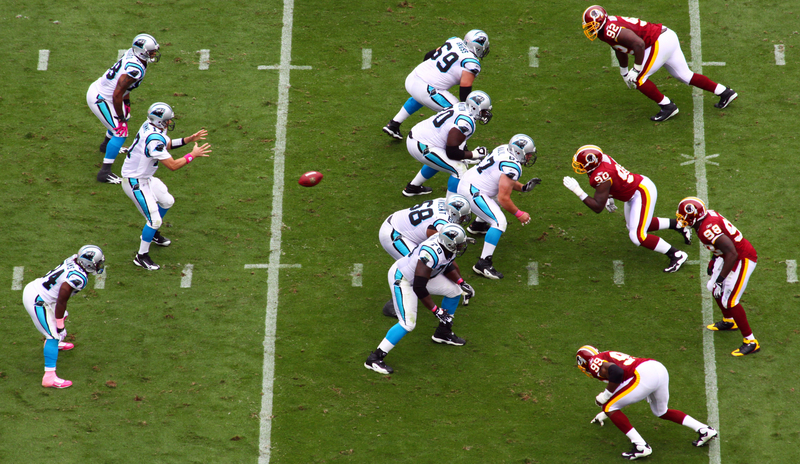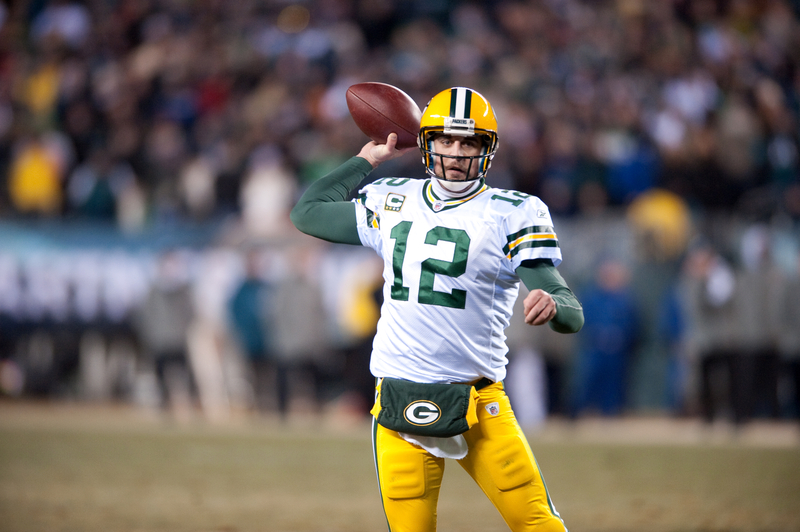Last updated on November 3rd, 2023 at 08:27 am
In American football, a play-action pass is a play designed to look like a running play. The sequence starts when the quarterback receives the snap, either from shotgun formation or under center. Immediately after the snap, the offensive blockers engage the defense at the line of scrimmage as if blocking for a run play. At the same time, the quarterback pretends to hand the ball off to the running back but then passes the ball to a wide receiver or tight end downfield. It is also often called a pass option play.
Why is it Called Play Action?
The play-action gets its name because the quarterback delays the pass until several seconds after the snap. When running a play-action pass, the passer won’t throw the ball until after the offensive line engages the defense, and a running back has pretended to rush up field with the ball. This scenario means that a “play-action pass” occurs after the play’s action has already started.
Who Invented the Play Action Play?
Identifying who invented the play-action pass is complicated because it is one of the oldest plays in American gridiron football. In the 1930s, historic Notre Dame coach Knute Rockne observed that pass plays are more successful when the quarterback and receivers can hide the outcome of the play for as long as possible. He wrote that the most successful way of drawing out the play was to have the offensive linemen pretend to block a run play.
The play-action pass likely became popular in the years after the forward pass was allowed in football. This revolutionary change to the game occurred in 1906. In less than 25 years, football teams and coaches adapted the forward pass to become one of the most effective strategies in the game.
What Makes a Play Action Pass more Successful?
It’s important to note that the success of a play-action passing is directly related to how many rushing plays have occurred in the game before the attempted fake. If the offensive team has had a relatively successful run game, the defense will take the threat of a pass rush more seriously. If the defense over-commits, the offense can benefit from that costly mistake.
Some quarterbacks prefer to receive the snap from the shotgun position when anticipating a play-action play. After the snap and fake handoff, a quarterback must drop back into the pocket to pass the ball. If the quarterback receives the snap while under center, this drop back may require them to turn their back to the defense, making them vulnerable. By accepting the snap in the backfield, they avoid this risk and can watch the play develop.
Conclusion About Play Action Passing in Football
The play-action play starts with a fake handoff to a running back to trick the defensive players into thinking that the offense will run the ball. Instead, the quarterback drops back and passes to an open receiver. This successful pass doesn’t always result in big plays for massive gains on the field, but teams have an essential tool in their playbooks that can ensure long-term success throughout a game.
Related Topics
What is the NFL Passer Rating?
NFL Teams Without Cheerleaders
What is an Audible in Football?
Football Players Taping their Arms
Why Do Football Players Wear Towels?
What are Special Teams in the NFL?
What is a Fair Catch in Football?
Why Do Athletes Wear Eye Black
What is a Hail Mary in Football?
Greg Kristan, owner of The Stadium Reviews, LLC and TM Blast, LLC, brings his extensive experience visiting over half of the MLB ballparks, along with numerous MLS, NHL, NBA, and NFL venues, to provide in-depth coverage on the bag policy, food options, and parking. He has also been interviewed about his experiences on several sports podcasts.



